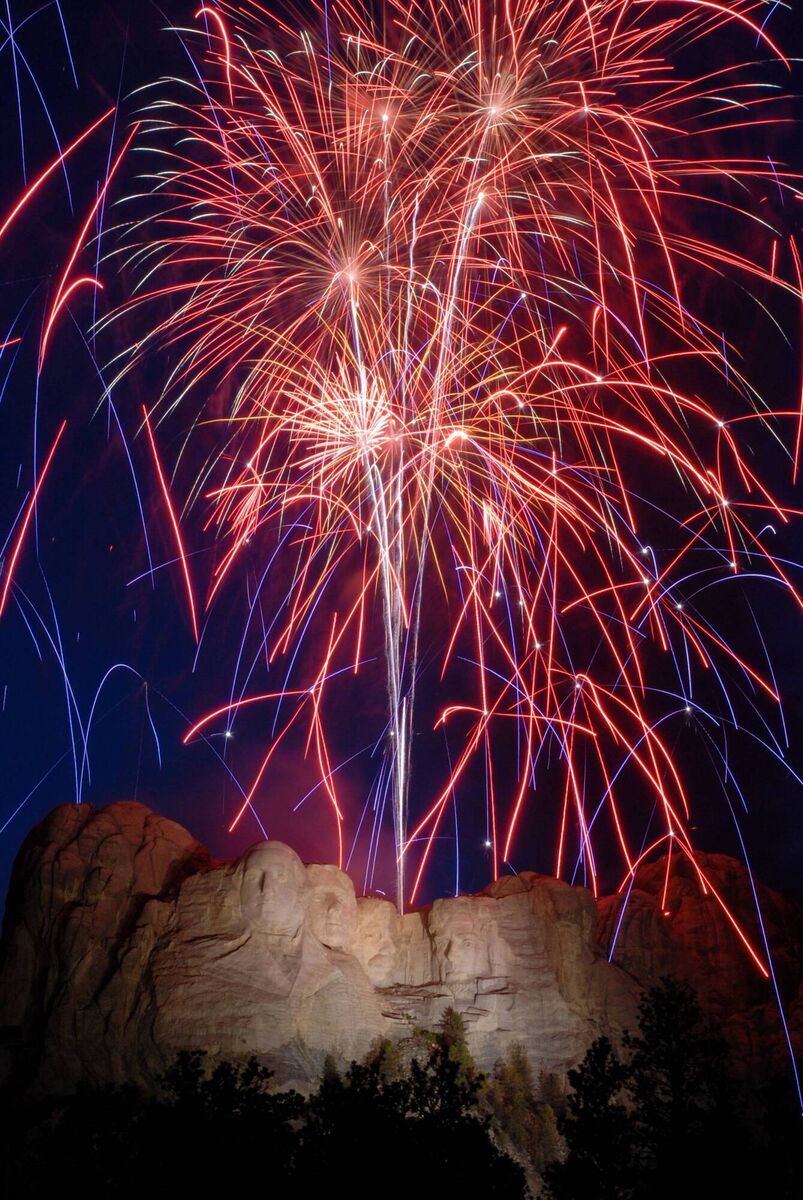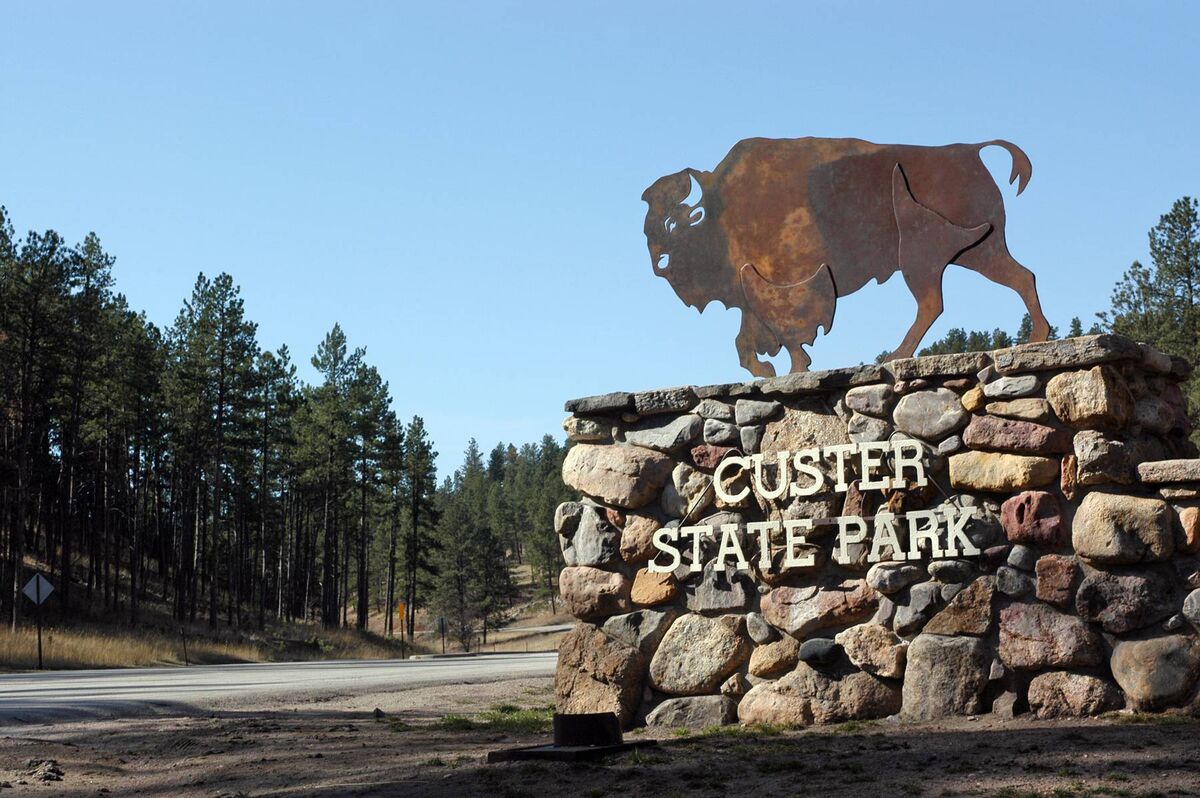South Dakota dreaming: a cross-country trip to the wilds of America

Close up landscape of the Mount Rushmore National Monument in the Black Hills region, South Dakota, USA. Weekend Travel Tom Breathnach
I was setting off across South Dakota on a bang. As 4th of July celebrations cascaded through the skies of Minneapolis, even fireworks and the sound of Celine Dion’s couldn't out-drama the journey I was about to undertake. Having arrived in the Midwest that week on Aer Lingus’ new route to the Twin Cities, I’d left the land of lakes, Prince and the Mall of America to experience one of my all-time travel dreams: to make a break for the wilds of South Dakota and visit the land where the buffalo roam.
My end destination would be Custer State Park — one of America’s most epic wildlife havens which sits 600 miles, or ten hours west, of Minneapolis. And so, with my rental Cherokee and backpacked tent from home, I hit the mighty I-90 highway for my American road-trip dream. 600 miles mean a lot of road — and lonely road — in South Dakota.
The eastern half of the state is an uneventful spread of corn, alfalfa and sunflower fields with the occasional farmstead offering a relief to the landscape. It’s tough terrain here; a splayed ranch house and a massive hog barn with its roof ripped off prompts me to Google that I’m now travelling through the Tornado Alley, which stretches from here south to Texas. But there are highlights amid the hostility too: the go-slow settlement of DeSmet where the Ingalls family of fame lived; and the 1880 Town in Murdo is a collection of authentic Wild West buildings which feels like wandering through the set of .

Crossing the mighty Missouri River, which bisects the state, and indeed the nation together with the Mississippi, South Dakota’s landscape dramatically shapeshifts from flat farmland to an undulating Oz of prairies, canyons and buttes. As I approached my night’s base, tornadoes were not going to be my worry however, but rather the thunderstorm warnings which were interrupting my radio transmission. Forks of lightning pierced the horizon with theatrical menace as I gassed it towards my refuge at Badlands National Park.
I was hunkering down for the night at Sage Creek campground — a primitive site deep into the park with no water nor electricity and a vault toilet for when nature calls. It was pitch-perfect. Erecting my tent before any deluge was the ultimate relief, plus that fresh prairie air would ensure I’d sleep sound following our cross-state schlepp. And that I did. The next morning, true to Sage Creek’s reputation, I unzipped my tent to a legendary sight: a massive male bison loitering amid the Winnebagos while a party of prairie dogs relayed his movements with rowdy chirps.
Bison are making a comeback in the USA. While 60 million once roamed the continent, the animals were driven to the brink in the 1880s when just 300 survived. Today, reintroduction programmes from California to Pennsylvania are seeing numbers rebound and South Dakota is home to the States’ highest numbers. I’d just have to find the rest of them.
The Badlands behind me, my journey continued through the Midwest wilds. South Dakota may be sparse on typical attractions, but it is home to one sightseeing blockbuster: Mount Rushmore. The granite sculpture, featuring the faces of Presidents Washington, Lincoln, Jefferson and Roosevelt, suddenly appears through the stunning forests of the Black Hills mountains with gasp-drawing impact.
Carved into the cliff face not quite a century ago, the wonder was the brainchild of historian Doane Robinson who aspired to attract tourism into the area. It worked. Three million visitors converge on the site annually and I arrive amid a cavalcade of Middle America, winding their SUVs, Harleys and trucks to the so-called Shrine of Democracy. I took one of the park’s viewing trails to awe at the sight up close but with the masses, it almost felt like the antitheses of the very wilds I was in. And though dramatic, the blockbuster attraction ultimately looked better in my rearview mirror.

Three days in, I touched ground at Custer State Park, my South Dakota stomping ground for the next few days. And it didn’t take long to get into the Custer way of life. Days were spent horse-riding in the morning, hiking or taking a dip in the afternoon and eating around the campfire (or indeed nearby Custer town’s diners) come evening. The true highlight, however, was the wildlife spotted on drives along the park’s several recommended routes. The first animals I discover are wild burro donkeys followed by elk, porcupine, a pair of pronghorn antelopes, and a rogue moose that had apparently wandered over from Wyoming. The bison were proving a little more elusive.
But patience was rewarded and after being tipped off to a grazing trail off the main drag, I was about to get lucky. First, I spotted one female bison emerging cagily from the thickets, then a second, and then a cavalcade of what must have been a hundred beasts thundering across the road like a megafauna freight train. Bison are quite the specimens up close; from colossal, shaggily haunched bulls, to tawny coloured calves in hot pursuit of their mothers. And no sooner had they galloped past me, they seemed to pepper into Custer’s vast plains, their bellows and grunts rumbling through the air. It was truly one of nature’s great scenes and after 600 miles of touring, it was now time to sit back in my driver’s seat, relax, and set my camera phone to roaming.
Aer Lingus’ direct route to Minneapolis route is currently on ice but once it’s safe to travel, you can still get there via Chicago (aerlingus.com). Camping in South Dakota makes a very cheap vacation; wild camping is free or expect to pay $20 a night for well-serviced sites or $60 per basic primitive cabins. For more, visit travelsouthdakota.com






